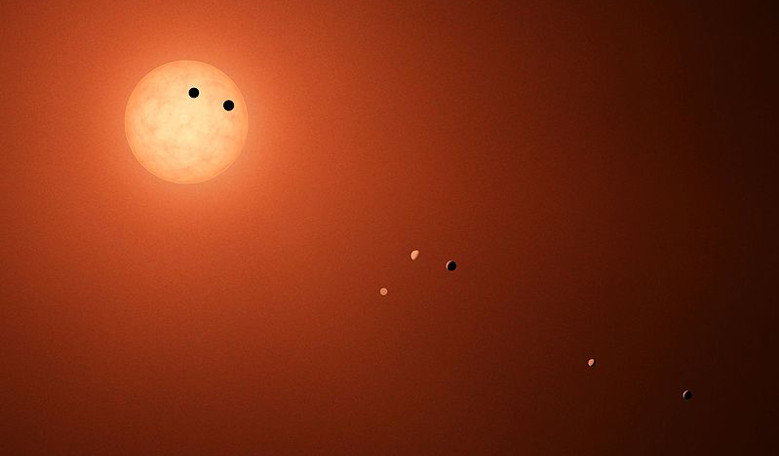It has been a good month for announcing exoplanet discoveries, as two separate teams using the same instrument have found 20 super-Earth to Neptune-mass planets in one search, while the other team confirms a fourth planet in a multi-planet system, with hints that there might be more.
The instrument in question is the HARPS spectrograph located on the ESO 3.6 metre telescope at La Silla Observatory, Chile and both teams utilised the HARPS Guaranteed Time Observation list to search for the exoplanets.
HARPS itself stands for the High Accuracy Radial Velocity Planet Searcher and it is through the radial velocity method – also known as the watching the wobble method – that these exoplanets were identified. Put basically, a host star will appear to wobble slightly in the presence of an orbiting planet thus causing a change in the colour of the light that astronomers observe.
The international team that detected 20 super-Earth and Neptune-mass exoplanets analysed data from 8 multi-planet systems to discover; one 4-planet system around HD 20781, two 3-planet systems around HD 31527 and HD 136352, and five 2-planet systems around HD 20003, HD 21693, HD 45184, HD 51608, and HD 134060.
The planets range in mass from 2 to 30 Earth masses, and have orbital periods ranging from 3 to 1300 days. The team, whose lead author on the research paper is S Udry from the University of Geneva, report that ‘some systems are interesting in terms of architecture,’ notably HD20003 which hosts two Neptune-mass planets with periods of 11.9 and 33.9 days and HD 134060, which harbours a small-mass planet on a 3-day orbit, accompanied by a more massive long-period planet at around 1300 days.
Meanwhile a UK-based team at the University of Hertfordshire, confirmed four signals at 18, 89, 147 and 330 days around a star known as HD 20794. The star had already been reported to host at least 3 planets and a dust disk, however this further analysis confirms a fourth planet – HD20794 d that has a 147 day orbit – and puts tighter constraints on the previously identified neighbouring planets.
HD20794 d corresponds to a super-Earth mass exoplanet while the signal at a period of about 330 d probably correspond to a Neptune-like planet located in the habitable zone of its host star, say the team.
Intriguingly, the team, whose lead author of the research is F. Feng, also note that there is also weak evidence for the existence of signals at periods of 11 and 43 days. If these signals are confirmed to be additional exoplanets at a later date, such a set-up could rival the recently announced Trappist-1 system, which has seven planets in a favourable position near to its star.
HD 20794 is a G8 main-sequence type star that is around 0.8 percent the mass of our Sun (the Sun is a G2 main-sequence star). The Trappist-1 host star for comparison is designated as an M8 ultra-cool dwarf, so is smaller and cooler than HD 20794.
Studies of the Trappist-1 system suggested that the tightly packed exoworlds avoided collision with one another due to orbits that are harmoniously resonant thus allowing them to be stable for very long times. Could HD 20794 turn out to be the next notable multi-planet system to compete with Trappist-1?
For more information on this research, see here and here











